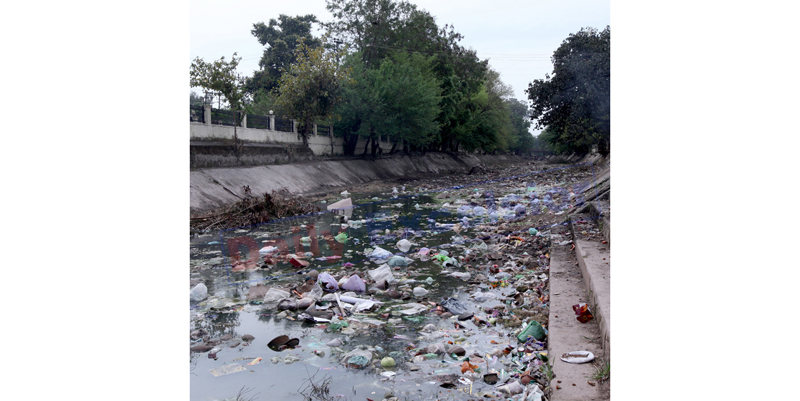In Jammu Division canals and tributaries contribute about 94 percent of the total irrigational area, Ranbir Canal in Jammu and Pratap canal in Akhnoor while rest 6 percent is irrigated by wells, tanks and other sources. The 60-km-long Ranbir Canal starts from Akhnoor and ends at Dumi Malpur village in RS Pura tehsil. Initially apart for irrigation purposes, it was used for navigation purpose also to carry essential commodities from Akhnoor to Jammu and vice versa. Through its distribution system of 460 km in length (17 Nos. of distributaries, 22 No’s of sub distributions) it provides irrigation to an area of 30000 hectares up to village Nekowal on Sialkote border of Pakistan, covers 3 tehsils, 5 block, 12 panchayats and 489 villages of Jammu. While our irrigation solely depends upon canals yet human activity and administrative apathy together is contributing to slow death of Ranbir Canal. For the lifeline of farmers in Jammu, authorities have failed to chalk out any long-term plan to save this water body and the much-hyped Swachh Bharat Abhiyan has remained a photo feature only. Unplanned residential colonies and illegal encroachments have reduced Ranbir Canal to a nallah as people have turned the water bodies into a dumping ground of solid waste and sewerage generated. Rotten vegetables, debris, non-degradable waste can be seen floating at every nook and corner with authorities turning blind eye to all this. In the absence of any strict enforcement of the environmental laws by the Jammu Municipal Corporation, UEED and the Flood Control Department, several sewerage nullahs dump hundreds of metric tons of garbage in this canal everyday due to which the depth and intake capacity of the canal is decreasing. This waste water mixing in canal water is also hazardous for farmers and farm products produced. More than 30 percent of the water in the canals and field channels across Jammu is waste water from urban areas. With no sewerage treatment plant operational till now majority of untreated water flows in the canal only. All stakeholders, be it farmers or traders or consumers, do not have any knowledge about adverse effects of waste water and waste water-irrigated produce. Medical professionals reveal that a sizeable number of cases reported are due to polluted water-borne problems like low levels of skin irritation, scaling and problem of coli-form. WHO’s Sanitation Safety Planning (SSP) manual has been flouted blatantly and JMC, UEED, State Pollution Control Board have just turned blind eyes to this mess with no corrective action and no accountability. Construction of illegal footbridges over tributaries of the canals is a common sight. Heaps of garbage stuck beneath these bridges can be seen that pose a serious threat to the health of nearby residents. The adjoining tree line right from Akhnoor to Jammu has already been sacrificed at the altar of highway widening and once paradise for morning walkers, the side parks and running strips, are carving for attention.
Desilting in today’s official term means closing the flow of water from Akhnoor during winters and opening on Baisakhi next year. Immediate auditing of yearly funds allocated and utilisation should be done as with no further future plan of new canals and receding water flow in the existing canals one wonders how the food grain production is going to increase in coming years. For saving Dal Lake five sewage plants have been built but no such efforts to save Jammu’s lifeline Ranbir Canal. Maharajas were men of far sighted vision who timely realised the need and potential of canals but present system is even immune to the environmental degradation occurring right in front of everyone. Once a tourist destination for many has been reduced to sewage carrying drain throughout Jammu. With this official apathy it seems time is running out for Ranbir Canal.


